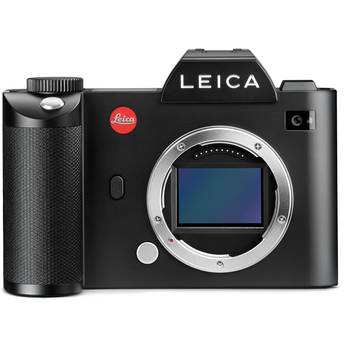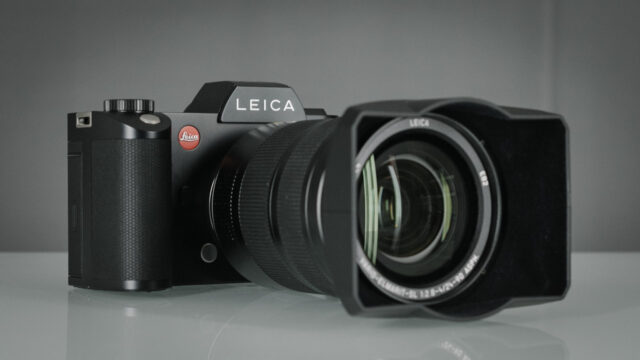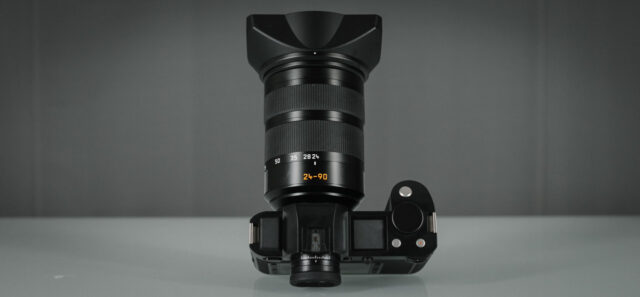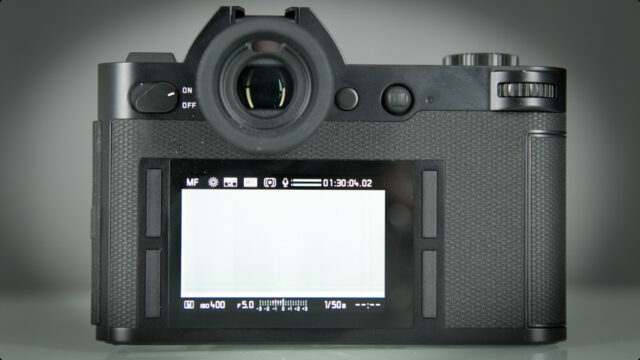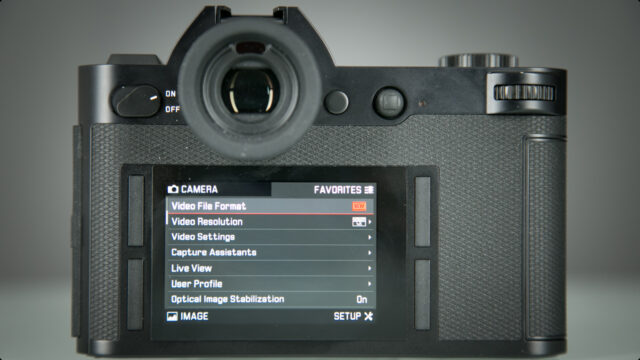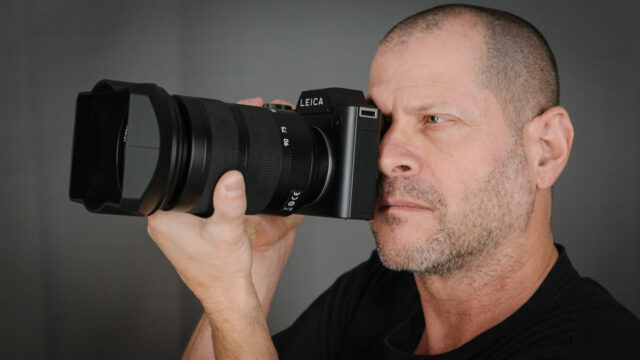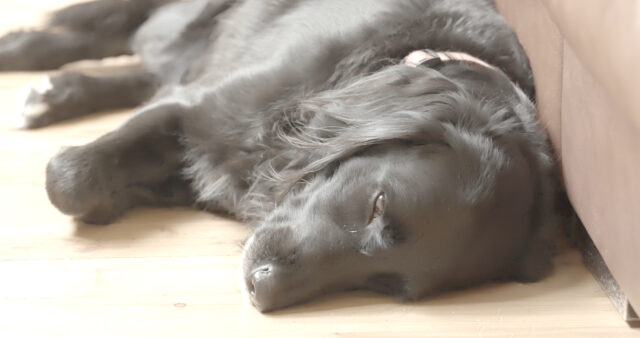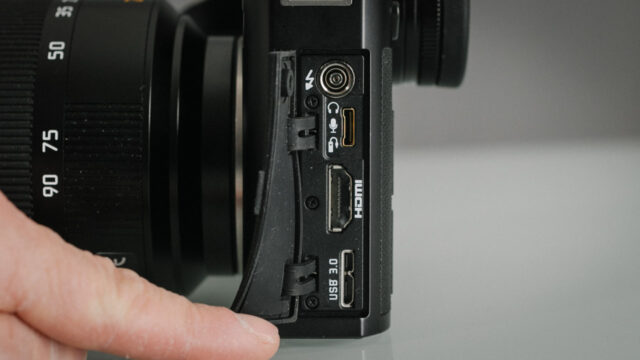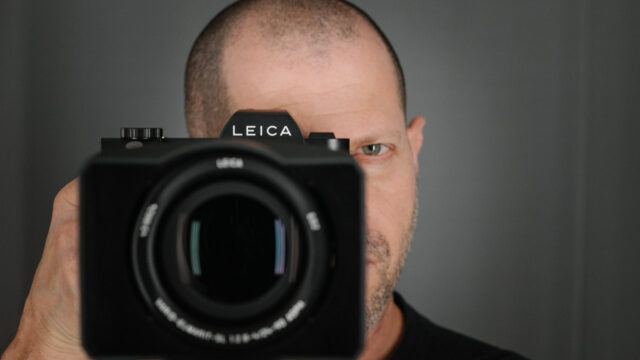Leica SL Review – Part 1 – Hands-On Real-World Footage in 4K
For years the name “Leica” has been associated with high quality expensive photography equipment, and the new Leica SL (Typ 601) camera is no different. Actually, with this camera, Leica tries to prove that “the mirrorless full-frame camera is the technology of the future”. I will let others to check how good or not this Leica SL (Typ 601) performs as a stills camera but for us here at cinema5D it was important to test and review Leica’s new flagship (even with a small project), as the respected manufacturer claims “it fulfills even the most stringent demands of moviemakers as a fully fledged video camera” in its official publications.
Check out our lab test Leica SL Review Part 2 HERE
Let me start by writing that this is the most confusing camera I ever tested up to date. The video images that comes out of this camera can be AMAZING yet the camera itself and how Leica treated the video side of it, can leave one with much to be desired. We had the camera for two days only (One for filming this review and the other for running it through our LAB test). I truly hope that some of the obstacles we found can either be fixed with a firmware update or at list grab Leica’s attention and respond to some of the issues we found.
It is important to note that the reviewed camera had the latest firmware installed (V1.2) and the lens used was the new Leica Vario-Elmarit-SL 24-90mm f/2.8-4 ASPH.
Please allow me to start gently by saying that not surprisingly, the Leica SL (Typ 601) is build like a tank. It consists of two blocks of solid aluminum, it is weather-resistant, heavy and nice to hold in the hands. The style of design is very clean and minimalistic. It takes a bit of time to get used to the menu structure and to my personal taste it is not very intuitive, yet, navigating between the different possibilities is better then what other respected manufacturers are currently offering with their camera menu.
One domain that the camera preformed well in (in combination with the newly developed 24-90mm zoom lens) was its autofocus system (in manual mode). You can either touch the LCD screen at any desired point or alternatively, use the little joystick to navigate with your thumb to the place you want your focus to be, press on it and voilà, spot on. The Achilles heel of this system is the absence of continuous autofocus and a much less accurate autofocus when light conditions are not ideal. It is also worth pointing out that when using manual focus this lens has a servo focus and not a direct one, so it can be hard to nail focus accurately. Those obstacles (among others) are bringing me to the conclusion that this camera is NOT for the run&gun documentary shooter, but rather better suited for controlled film sets.
Continuing stating with what I liked about this camera, I cannot skip the formidable EVF. Just when I thought that my eyes are getting old and “out of focus” becomes my second name, here comes a manufacturer that understand how important it is to include a high quality EVF device in a high resolution camera. I can’t remember myself magnifying the image even once during my shooting day in order to judge focus. The combination of an accurate focus system, a great lens and an excellent EVF made my life very easy. Well done Leica!
It is also worth mentioning that I had no overheating issues during my shooting day and 90% of the video you see above was shot handheld. The optical stabilisation system implemented in the 24-90mm lens was working very well. (At times, too well…You have to turn it off when on a tripod while attempting to pan as the lens will heavily compensate on the movement.)
And what about the “ugly side” of the camera you may ask? Well, for best results you should not attempt to shoot above 400 ISO. You can get away with 800 ISO but anything above that value will prove to be in a very painful experience. It looks like as if the camera has some kind of noise reduction constantly turned on and this will become very evident above 800 ISO. Anything which is a bit underexposed will become muddy. On a side note, I’m not sure if you remember how it was with the old Sony mirrorless cameras (NEX5 for example), when the LCD live view showed one thing and when pressing the REC button it immediately turned into something else. This is exactly the case with this camera. Turn the ISO north of 1600 and the picture in the EVF will become noisy. Press the REC button and the picture will “magically” turn into lake of mud. By the way, this phenomenon is happening no matter if you record 4K internally (8 bit), or 10 bit externally. The picture below is taken straight from the time line is showing best what I’m trying to describe. See how the dog’s front head lost its details completely – click on it to see the full resolution.
It also felt like the dynamic range (DR) of this camera is somehow limited especially when filming with Leica’s strange L-LOG gamma turned on. I was constantly trying not to overexpose my picture and on the other hand, there is no real way to avoid noise in anything which is even a tiny bit underexposed. It feels like the tolerance offered by this camera needs to be improved.
Last but not list, for whatever reason, Leica decided NOT to include a mic and headphone jack build into the camera body but rather sell an dedicated external audio device which will connect to the camera via a proprietary connector (not XLR or mini jack, not available yet – but it will most likely look similar to this, which was made for another Leica camera).
Here is a summery of the strengths and weaknesses of the Leica SL (Typ 601) in no particular order (make sure to download the 4K file by clicking “Original” from here: https://vimeo.com/149700017)
Strengths:
- A variety of resolution and frame rates. DCI 4K is the highest resolution possible, but in 24p only (No 25p). Recording is made in H.264 format wrapped in MOV or MP4 container (identical in quality). Data rate: 100Mbps.
- Excellent 1080/120fps
- Rugged camera body
- Excellent EVF and good touch screen LCD screen.
- Very good autofocus system (no continuous autofocus).
- Exceptionally detailed video picture
- No overheating
- “World camera” – switchable from PAL to NTSC
- Full HD recording is done in full frame
- 10 bit 4:2:2 external recording via 1.4 HDMI
- Large HDMI camera conector
- Zebra, histogram, peaking
- LOG picture profile
- Leica M and R adapters are currently available
- Battery life is exceptional!
Weaknesses:
- NR (noise reduction) is constantly working and very noticeable above 1600 ISO
- Anything recorded above ISO 800 becomes very noisy and not usable.
- No continuous autofocus.
- No build-in microphone and headphone jacks. A separate adapter must be purchased.
- Camera alone will set you back by $7,500.
- Video can be recorded only on a single SD slot.
- 29:59 min recording limit.
- Dynamic Range is limited (stay tune to our lab test review coming soon).
- 8 bit internal recording.
- 4K recording is in Super 35 format (which is not a weakness for those who prefers that mode over full frame).
- Zebra values should be displayed in industry standard method (% marked).
- L-LOG picture profile is not “locked” you can amend Sharpness, Saturation and Contrast.
- No articulated LCD screen
Leica Vario-Elmarit-SL 24-90mm f/2.8-4 ASPH remarks:
This is Leica’s first new lens out of 3 to be brought to the market. (The other two will be 90-280mm and 50mm). Personally I prefer constant aperture when working with a zoom lens but can understand Leica’s decision to try and keep this lens in an acceptable size by “compromising” on the availability of constant aperture. My other concern is the servo motor which is driving the lens focus ring. When attempting to focus in a traditional manual way, the response of the focus ring is not direct, making it very hard to achieve accurate focus (as a result it will also not work with a follow focus system for example). On the plus side, it’s truly amazing how sharp this lens is, throughout the whole range of its focal length, and catch me if you can by spotting any “breathing” when focusing.
Conclusion:
The Leica SL (Typ 601) does not come cheap. You will have to say “goodbye” to more then $12,000 in order to enjoy the combination of this camera and zoom lens. Can it fulfill even the most stringent demands of moviemakers as a fully fledged video camera?, well, it depends on how far and how fast Leica can and will address some if not all the issues related to the image quality. In some ways, this camera is everything that the Canon 1DC was not (as Canon never improved the camera since its introduction). Will it keep its value (unlike the Canon 1DC)? It is truly hard to say, but one thing is for sure, Leica is on a road for a new beginning when it comes to video imaging. It is a traditionally structured company but If they will listen to customers’ feedback and continue improving their products for video shooters, I’m sure some will show love to the new Leica SL camera.
As requested by some, here is the link to the ungraded version for you to download. Make sure you are downloading the 4K version marked as “original”.
Camera settings for this video: DCI 4K/24p, mostly shot in 400 ISo, L-LOG picture profile (all parameters set on “LOW”). Audio was recorded separately on an external recorder.
LUT designed and contributed by my colleague and friend Sebastian Wöber. For the list of equipment used in this video, please see below.
Music is a courtesy of the music bed. Tracks: Winter by Ashley Arrison and Where Christmas is Found by Aprilemade
Thank you:
Romana and her family for helping creating this video in such a short notice. Highly appreciated!
LEICA STORE WIEN for supplying the camera and lens.
Most important, a happy holiday season for all of us. May 2016 only bring positive news!
Oh, and for those who would like to try and bake the cake at home: (cinema5D can not take any responsibility for the end result…:) )
- 3 eggs
- 250 grams sugar
- 1 sachet of vanilla sugar or 1 teaspoon of vanilla extract
- 150ml oil
- 150ml milk
- 200 grams fine flour
- 1 sachet of baking powder
- 150ml liquid or melted chocolate
Mix well and bake in the oven at 150-160 degrees for 1H and 15 min.
Johnnie Behiri is a freelance documentary cameraman/editor/producer working mostly for the BBC and other respected broadcasters. He is also co-owner of cinema5d.com.
